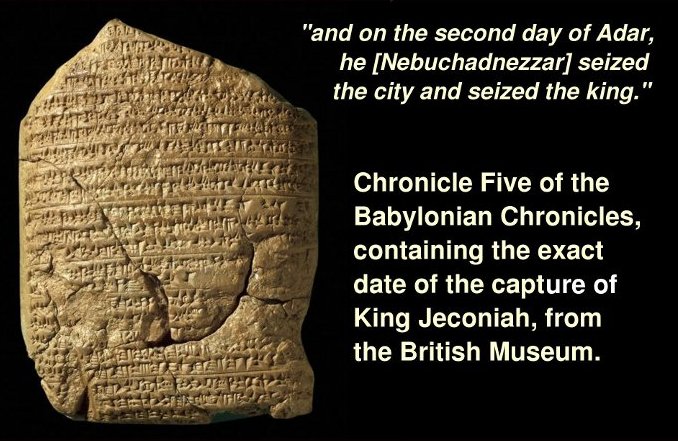
by John P. Pratt
15 Aug 2018, 1 Resurrection (M, UM)
©2018 by John P. Pratt. All rights Reserved.
| 1. Ezekiel's Ordeal |
| 1.1 Wheel Within a Wheel |
| 1.2 The Prophecy |
| 1.3 The Venus Calendar |
| 2. The Fulfillment |
| 3. Judah Start Date |
| 4. Israel Start Date |
| 5. Conclusion |
| Notes |
The Lord commanded the Old Testament prophet Ezekiel to make a very graphic and enigmatic prophecy about the coming siege of Jerusalem by King Nebuchadnezzar of Babylon.[1] It was preceded by a vision of winged creatures and a wheel within a wheel. This article proposes a precise interpretation of the prophecy by recognizing that it referred to the Venus Calendar. Let's begin by looking at the prophecy which was actually an ordeal for the new prophet, then its fulfillment, and finally unraveling the enigmatic parts to see that it was all a very strong witness of the foreknowledge of God.
The prophet Ezekiel, who wrote the Old Testament book of that name, spoke many prophecies in the name of the Lord. He was contemporary with Jeremiah, but he was taken into captivity to Babylon while Jeremiah remained in Jerusalem to prophesy to King Zedekiah whom King Nebuchadnezzar installed to reign over the poor in Judah after all of the upper and middle class had been deported to Babylon (2 Kings 24:14,17). While Jeremiah was thrown into a slime pit to suffer in Jerusalem, Ezekiel was assigned his own special prophetic ordeal to suffer in Babylon.
 |
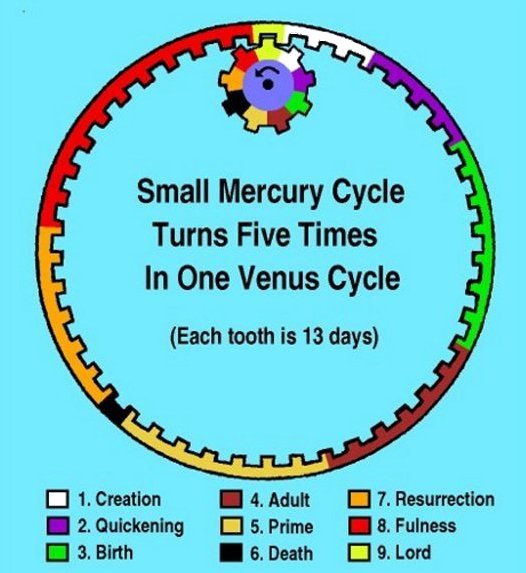 |
So what was the work that he describes as a wheel within a wheel? Could it have anything to do with his meticulous keeping of exact dates? As discussed below, the fulfillment of the prophecy has everything to do with the cycles of the planets Venus and Mercury. Both are used by the Lord in sacred calendars. The nominal length of a Mercury Cycle (from rising as a morning star to the next such rising) is 117 days. The corresponding length of a Venus Cycle (also from Morning Star to Morning Star) is 585 days, which is exactly 5 Mercury Cycles (5 x 117 = 585). This relationship can be illustrated as a wheel rolling around within another wheel (see Figure 2). It is here suggested that the two wheels seen by Ezekiel may in fact have been related to the cycles of Venus and Mercury because those would be the calendars on which his prophecy of the following week would be fulfilled.
So what was the prophecy? Let's read it:
1 Thou also, son of man, take thee a tile, and lay it before thee, and portray upon it the city, even Jerusalem:
2 And lay siege against it, and build a fort against it, and cast a mount against it; set the camp also against it, and set battering rams against it round about.
3 Moreover take thou unto thee an iron pan, and set it for a wall of iron between thee and the city: and set thy face against it, and it shall be besieged, and thou shalt lay siege against it. This shall be a sign to the house of Israel.
4 Lie thou also upon thy left side, and lay the iniquity of the house of Israel upon it: according to the number of the days that thou shalt lie upon it thou shalt bear their iniquity.
5 For I have laid upon thee the years of their iniquity, according to the number of the days, three hundred and ninety days: so shalt thou bear the iniquity of the house of Israel.
6 And when thou hast accomplished them, lie again on thy right side, and thou shalt bear the iniquity of the house of Judah forty days: I have appointed thee each day for a year.
7 Therefore thou shalt set thy face toward the siege of Jerusalem, and thine arm shall be uncovered, and thou shalt prophesy against it.
8 And, behold, I will lay bands upon thee, and thou shalt not turn thee from one side to another, till thou hast ended the days of thy siege. — Ezek. 4:1-8
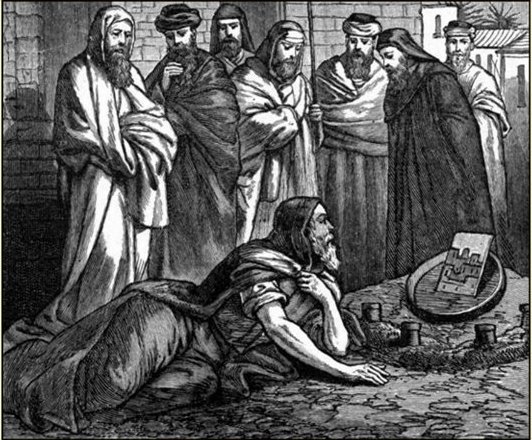 |
Even his diet was prescribed. The recipe for bread was given, which is now sold in health stores as "Ezekiel Bread". That is the good news, but the bad news is that it was to be baked over a dung fire, which apparently represented how the two nations had polluted the bread of heaven which had been given them by Moses. Do you still want to be a prophet?
Getting back to the prophecy itself, we are told the first 390 days represented 390 years of Israel having sinned against God, and the last 40 representing the last forty years when Judah had last begun to truly serve God. Because the two intervals were successive, we can conclude that the siege would begin 430 years (390 + 40) after Israel last chose to follow God. Apparently this emphasis on how long they had been sinning is to show that the Lord had been very patient in having given them time to repent, but now time had run out.
In my work it was discovered early on that both 40 years and 430 years are cycles when the Venus Calendar approximately realigns with the year, so that appeared to be a good clue to follow.
The planets Venus and Mercury both have their own sacred calendar which keeps track of where they are in the heavens as seen from the earth. Our Gregorian Calendar keeps track of the sun's seasons so that we know when to plant our garden. The Hebrew Calendar keeps track of both sun and moon so that each month starts near a new moon and each year starts near the first day of spring. Similarly, the Venus and Mercury calendars keep track of when each rises as an evening star (birth), sets as evening star (death) and then rises as a morning star (resurrection). Each has nine such phases that are all multiples of thirteen days. Each thirteen day period is represented as a tooth on the gears in Figure 2.
The cycle times of Mercury and Venus are not exactly 117 and 585 days. It turns out that 5 Venus cycles are very close to 8 years, so that 25 cycles are nearly 40 years. The thing that makes 40 years special is that in that time there is exactly one extra Mercury cycle. Thus, instead of 125 Mercury cycles in 40 years, as would be expected being a five-to-one ratio with Venus, there are actually nearly exactly 126 Mercury cycles.
The Lord employs this forty year Venus-Mercury cycle several times in scripture, such as the length of time that Israel wandered in the wilderness after the Exodus (which was also represented by one day per year, see Num. 14:34) and the length of the 40-year reign of King David (1 Kings 2:11).
Now that we have the clue about the starting points of the prophetic counting, let us proceed the easy way and reckon backwards from when the prophecy was fulilled. After all, prophecy is not given to satisfy men's curiosity about the future but usually to encourage repentance by fear of coming punishment. Then, after it is fulfilled, it is a witness that God knew the future, sometimes right to the very day as in this case. Thus, after being fulfilled it becomes a witness of the foreknowledge of God.
The precise date of the fulfillment was so important to be known afterward that it is recorded three times in the Bible (Ezek. 24:1-2, Jer. 52:4, 2 Kings 25:1). In fact, the Lord explicitly commanded Ezekiel, who was not in Jerusalem and wouldn't have otherwise known with certainty, to write down the date:
1 Again in the ninth year, in the tenth month, in the tenth day of the month, the word of the Lord came unto me, saying,
2 Son of man, write thee the name of the day, even of this same day: the king of Babylon set himself against Jerusalem this same day. — Ezek. 24:1-2
 |
The day 10 Tebeth in the ninth year of the reign of Zedekiah was Fri 11 Dec 589 BC. That day was 1 Resurrection on both the Venus and Mercury calendars! That is nominally the day when both planets would first rise before the sun together in the east after having "died" at their setting in the western sky as evening stars.
Thus, the anticipation of a connection to the Venus and Mercury calendars based solely on the periods of 40 and 430 years is now seen to come to fruition on a rare date when both risings at resurrection coincide. The day of the resurrection of Venus only occurs on one day in 1.6 years, and that can occur on any of the 9 phases of Mercury. Thus, both risings occur on the same day only on one day in 9 x 1.6 = 14.4 years! For that day to be the precise day recorded three times in the Bible makes it clear that we are supposed to recognize that and understand the importance.
One obvious implication is that because of how the wheel within a wheel works, we can now calculate the exact days of the starting points of the prophecy both for Judah and for Israel.
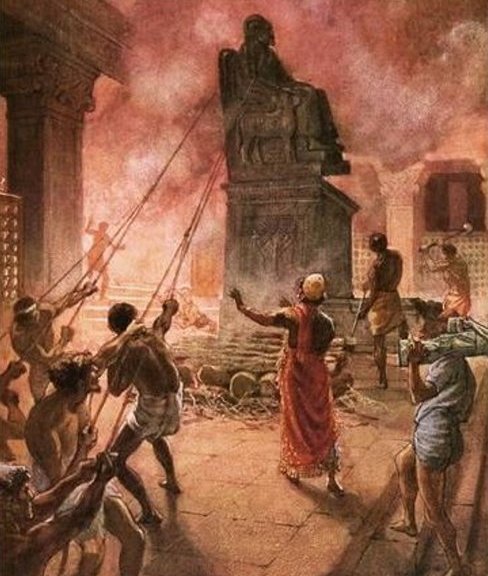 |
That date falls into the 12th year of the reign of Josiah, King of Judah. That happens to be the year in which he began the great purge of all idols from the nation (2 Chron. 34:3)! That is perfect for the symbolism implied and hence can be identified as the indicated date (see Figure 5). Was that date just a random date on the Hebrew Calendar or was it a date King Josiah might have chosen as a good start date? It turns out the date was the holy day 1 Tebeth. That day is the first day of winter and represents the winter equinox on the Hebrew Calendar, even though it can vary by about two weeks around the true equinox. But in that year, being on 21 Dec, it indeed fell at the time of the true equinox.
Moreover, besides being 1 Resurrection on both the Venus and Mercury calendars, it was also a holy day on several other sacred calendars. It was 1 Light on the Sacred Round, the first day of the 260-day cycle, representing the beginning of a new time period. It was also 1 Resurrection on the Uniform Mercury Calendar. That alignment would only occur on one day in 9 x 14.4 years = 130 years! Similarly, the date of the publication of this article also coincides with a period when the Mercury and Uniform Mercury align and is also on a day when both are on 1 Resurrection.
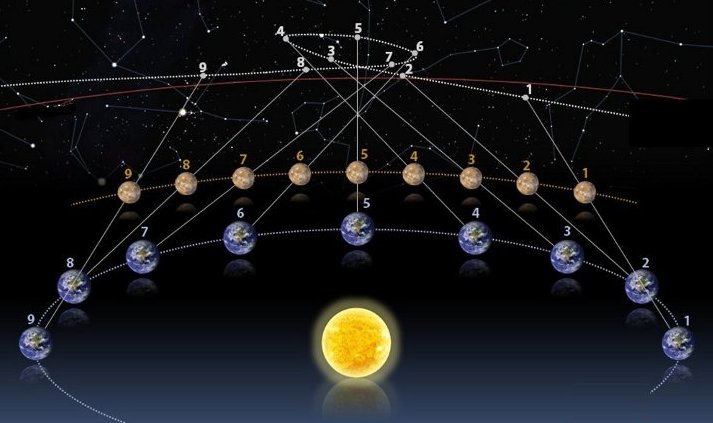 |
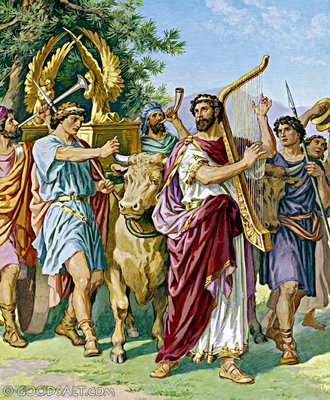 |
So what happened 430 years before the siege? We merely need to seek the date of 1 Resurrection (Venus) at that time because it is the Venus Calendar which seems to be governing this prophecy. Doing that leads to the date Sat 16 Nov 1019 BC, being 1 Resurrection (Venus). Moreover, it was also 1 Light (Sacred Round) even as was Josiah's Purge. That combination only occurs once in 32 years. It was also the major holy day 1 Lord (Mars) and a holy day on several other sacred calendars.
So what could have happened on that day which would mark the last time that Israel had chosen the Lord? It occurred when King David had reigned for seven and a half years over the kingdom of Judah. That is right when Israel chose David to reign over them too (2 Sam. 5:5). Indeed that looks like a perfect match for being the last time that Israel chose to follow God's servant (see Figure 7).
As two more witnesses that this is the correct interpretation, on both the Mars and Uniform Mercury calendars the day was 1 Lord, which is as close in meaning to "1 King" as any holy day, because Lord refers to one who rules over a domain. Thus, it truly appears that the crowning of David to reign over Israel was indeed the event referred to in the prophecy as the beginning date.
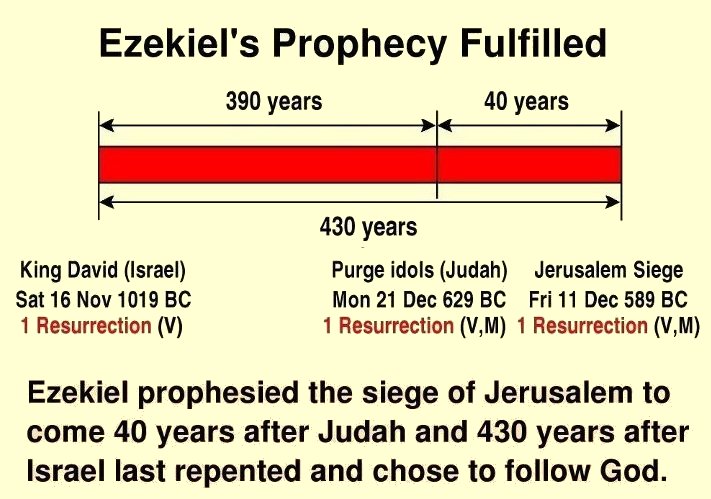 |